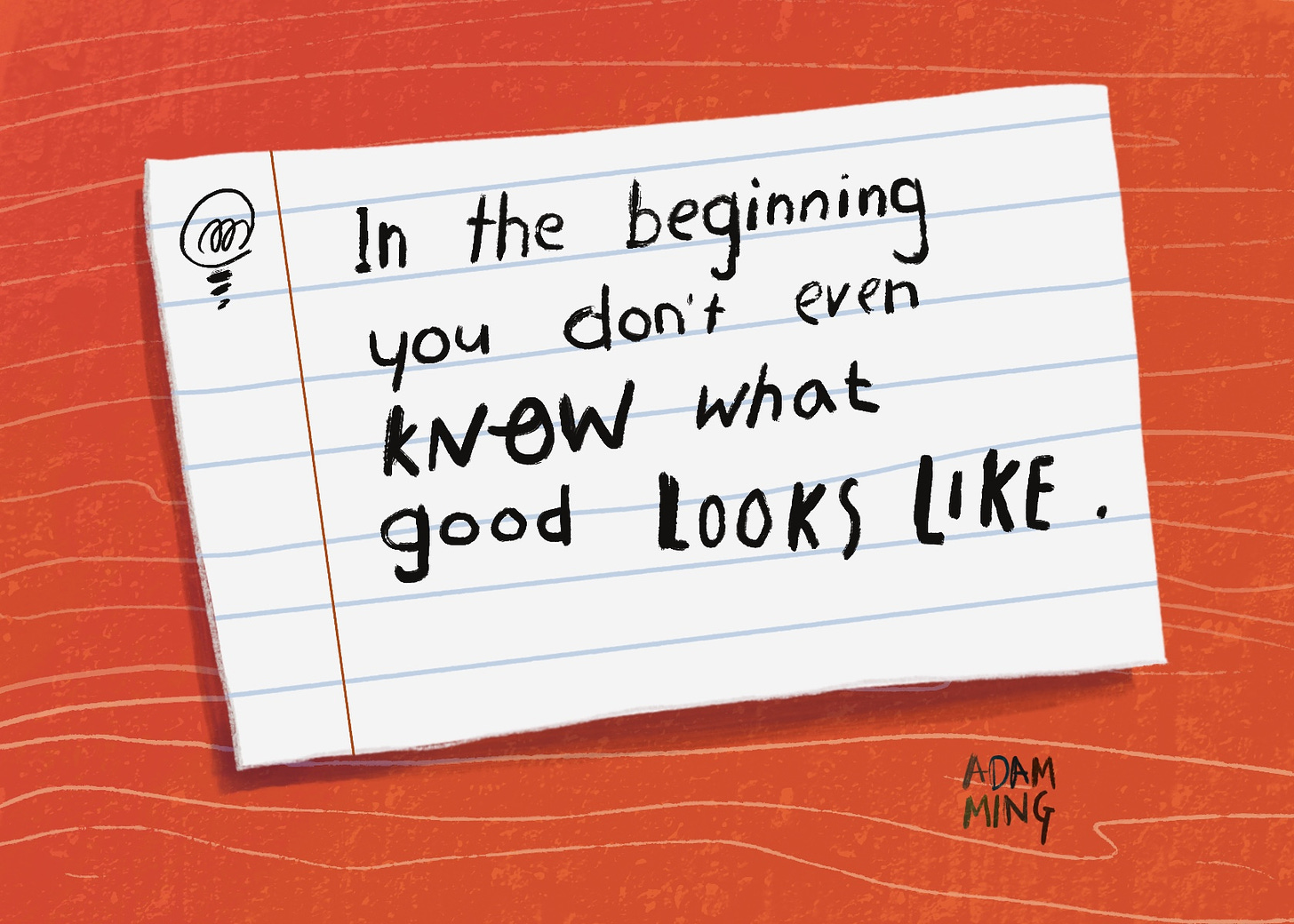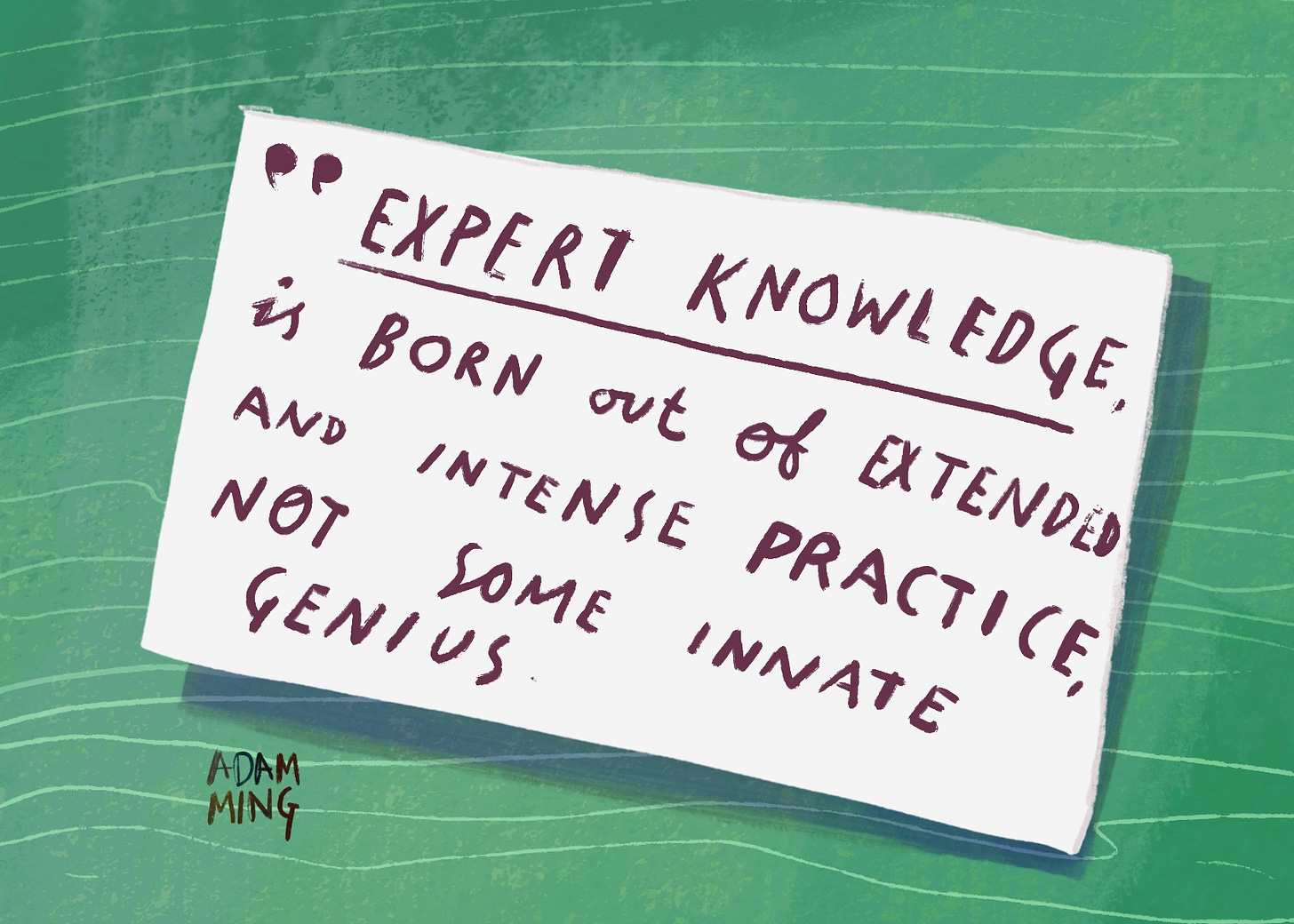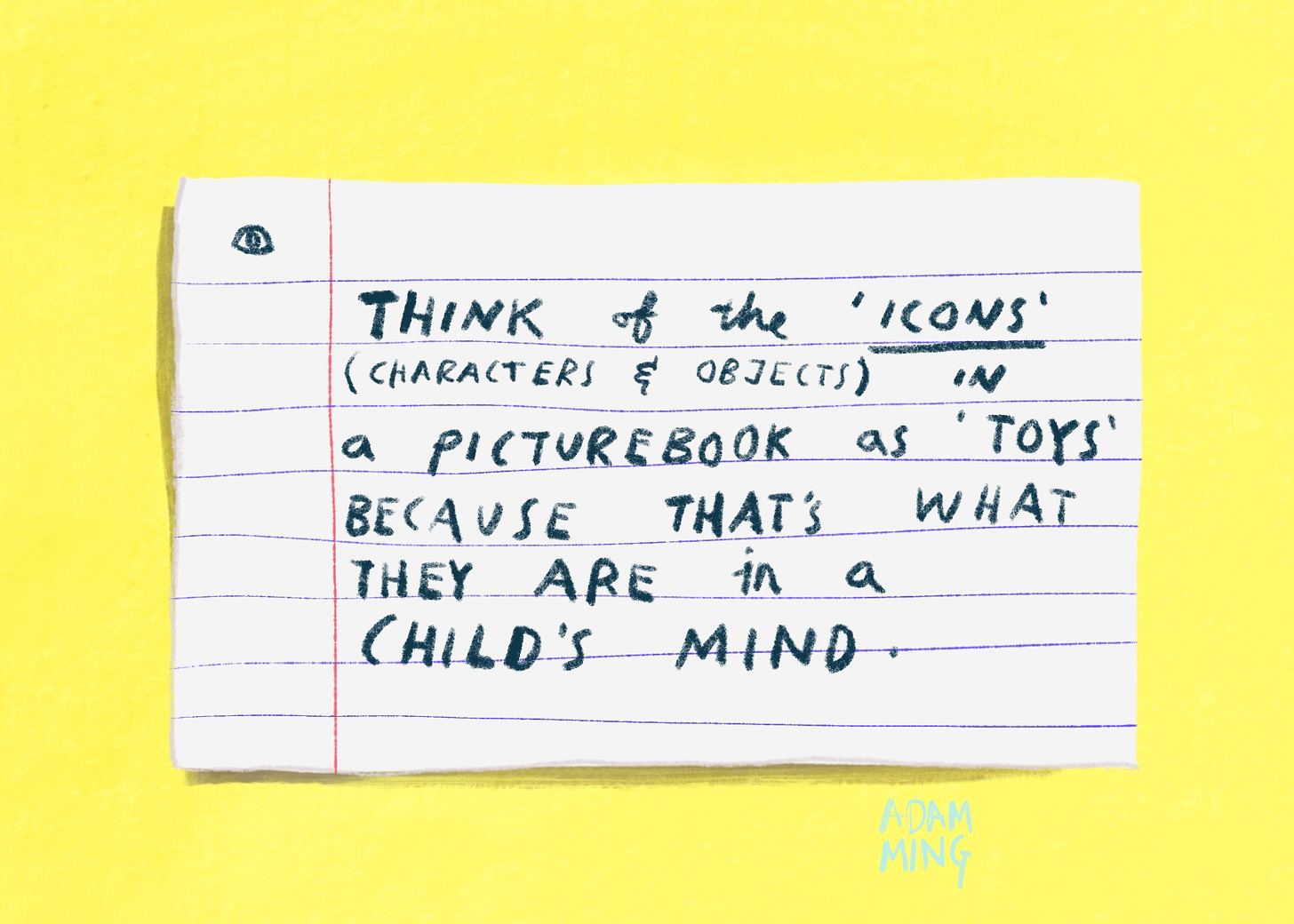In the beginning, you don't even know what good looks like!
3 Sparks for your creative practice.
Dear Sparky,
Thanks for opening this email, here are another three notes that I picked from my ever-growing pile.
You might think you know what a good illustration looks like, or how to do a Muay Thai kick just because you saw it on a reel or TikTok. But if you’re a beginner there’s really no way of knowing. If you want to get beyond being a beginner you need two things.
You need someone to show you what’s good.
You need intense and extended practice.
Someone to show you what’s good.
I have a theory, at least for me most of the stuff I read is the popular stuff that’s recommended by Amazon and friends. But that’s not the good stuff, these bestsellers are often the popularisers of great work, not the source. They are the starting point, not the end.
If you want the really good stuff, find out what influences them. This could be as easy as flipping to the back of any of these popular books for further reading in the case of writers. For musicians, find out what your favorite artist listens to. And for artist, find out the influences of the artist you admire.
All the art we make is a response to all the art that was made before. And all first-year art students generally make a similar kind of art, the kind of thing influenced by populizers and not the source.
Expert Knowledge
Expert knowledge is the kind of thing that has no place in regular conversation. But when people start getting stuck in very specific situations, that’s where this knowledge shines. An expert can easily see your blind spots. And if you’re an expert then well, you’ll avoid the pitfalls so many others are falling into. Knowing what’s important, is the same as knowing what’s not important. If you remove enough of the unimportant things from your practice or habits or routines, all you will have left is expertise.
Illustrations are Toys
We started to read to our baby the month she was born, she’s 2 now.
When you open a picture book, it’s not about quickly reading the words. You’re opening a stage, and on the stage, the little illustrated icons you see, are like toys in the mind of the kid. They call each one out; mango, moon, apple, tiger. They imagine they can pull it out from the page and eat it.
They run from pictures of tigers.
They hug and high-five the characters.
They talk to them.
When I make an illustration for a kid book, I’m thinking in terms of icons, and I’m thinking of the icons as toys.






